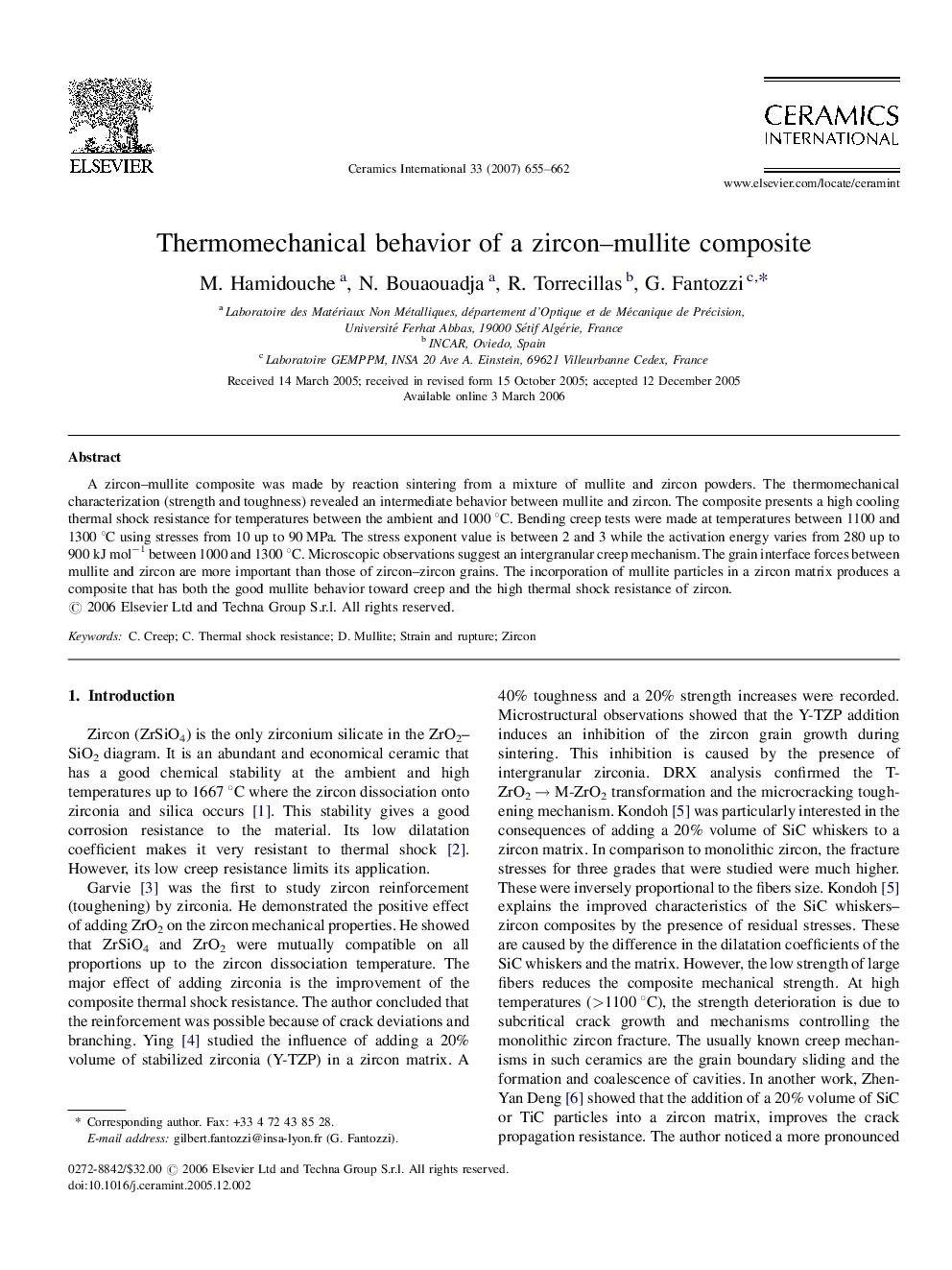| Article ID | Journal | Published Year | Pages | File Type |
|---|---|---|---|---|
| 1465039 | Ceramics International | 2007 | 8 Pages |
Abstract
A zircon-mullite composite was made by reaction sintering from a mixture of mullite and zircon powders. The thermomechanical characterization (strength and toughness) revealed an intermediate behavior between mullite and zircon. The composite presents a high cooling thermal shock resistance for temperatures between the ambient and 1000 °C. Bending creep tests were made at temperatures between 1100 and 1300 °C using stresses from 10 up to 90 MPa. The stress exponent value is between 2 and 3 while the activation energy varies from 280 up to 900 kJ molâ1 between 1000 and 1300 °C. Microscopic observations suggest an intergranular creep mechanism. The grain interface forces between mullite and zircon are more important than those of zircon-zircon grains. The incorporation of mullite particles in a zircon matrix produces a composite that has both the good mullite behavior toward creep and the high thermal shock resistance of zircon.
Related Topics
Physical Sciences and Engineering
Materials Science
Ceramics and Composites
Authors
M. Hamidouche, N. Bouaouadja, R. Torrecillas, G. Fantozzi,
